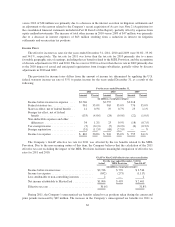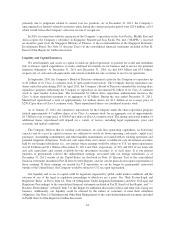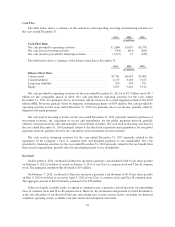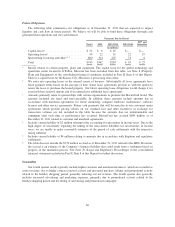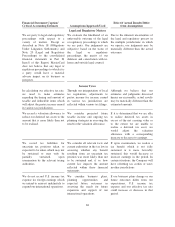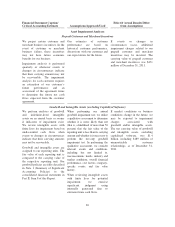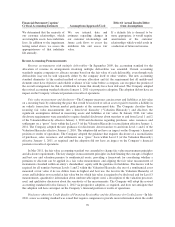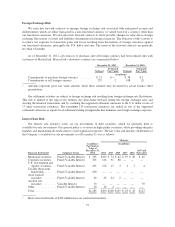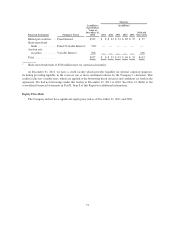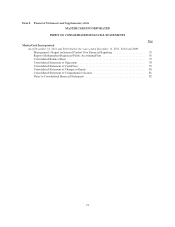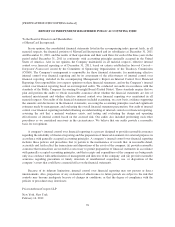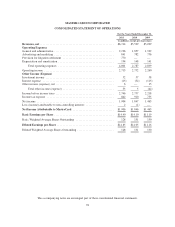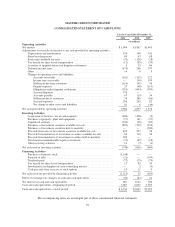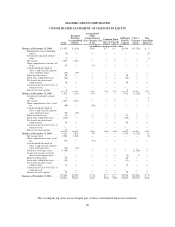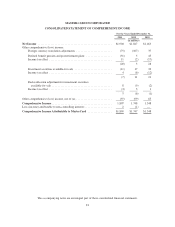MasterCard 2011 Annual Report Download - page 75
Download and view the complete annual report
Please find page 75 of the 2011 MasterCard annual report below. You can navigate through the pages in the report by either clicking on the pages listed below, or by using the keyword search tool below to find specific information within the annual report.quality of their financing receivables in the disclosures to financial statements including, but not limited to,
significant purchases and sales of financing receivables, aging information and credit quality indicators. The
Company adopted this accounting standard effective January 1, 2011, and the adoption did not have an impact on
the Company’s financial position or results of operations.
Impairment testing for goodwill—In December 2010, a new accounting standard was issued that requires
Step 2 of the goodwill impairment test to be performed for reporting units with zero or negative carrying amounts
if qualitative factors indicate that it is more likely than not that a goodwill impairment exists. The provisions for
this pronouncement are effective for fiscal years beginning after December 15, 2010, with no early adoption
permitted. The Company adopted this accounting standard on January 1, 2011, and the adoption did not have an
impact on the Company’s financial position or results of operations.
In September 2011, a new accounting standard was issued that is intended to simplify how an entity tests
goodwill for impairment. Entities are permitted to perform a qualitative assessment of goodwill impairment to
determine whether it is necessary to perform the two-step quantitative goodwill impairment test. This standard is
effective for goodwill impairment tests performed in interim and annual periods for fiscal years beginning after
December 15, 2011, with early adoption permitted. The Company adopted the revised accounting standard
effective October 1, 2011. The adoption did not have an impact on the Company’s financial position or results of
operations.
Business combinations—In December 2010, a new accounting standard was issued that requires a company
to disclose revenue and earnings of the combined entity as though the business combination that occurred during
the current year had occurred as of the beginning of the comparable prior annual reporting period, only when
comparative financial statements are presented. The disclosure provisions are effective prospectively for business
combinations for which the acquisition date is on or after the beginning of the first annual reporting period
beginning on or after December 15, 2010, with early adoption permitted. The Company adopted this accounting
standard on January 1, 2011, and the adoption did not have an impact on the Company’s financial position or
results of operations.
Comprehensive income—In June 2011, a new accounting standard was issued that amends existing guidance
by allowing only two options for presenting the components of net income and other comprehensive income:
(1) in a single continuous statement of comprehensive income or (2) in two separate but consecutive financial
statements, consisting of an income statement followed by a separate statement of other comprehensive income.
Also, items that are reclassified from other comprehensive income to net income must be presented on the face of
the financial statements. In December 2011, a new accounting standard was issued that indefinitely defers the
effective date for the requirement to present the reclassification of items from comprehensive income to net
income. Both standards require retrospective application, and are effective for fiscal years, and interim periods
within those years, beginning after December 15, 2011, with early adoption permitted. The Company will adopt
the revised accounting standards effective January 1, 2012, and does not anticipate that this adoption will have an
impact on the Company’s financial position or results of operations.
Item 7A. Quantitative and Qualitative Disclosures About Market Risk
Market risk is the potential for economic losses to be incurred on market risk sensitive instruments arising
from adverse changes in market factors such as interest rates, foreign currency exchange rates and equity price
risk. Our exposure to market risk from changes in interest rates, foreign exchange rates and equity price risk is
limited. Management establishes and oversees the implementation of policies governing our funding, investments
and use of derivative financial instruments. We monitor risk exposures on an ongoing basis. There were no
material changes in our market risk exposures at December 31, 2011 as compared to December 31, 2010. The
Wall Street Reform and Consumer Protection Act includes provisions related to derivative financial instruments
and the Company is determining what impact, if any, such provisions will have on the Company’s financial
position or results of operations.
71



